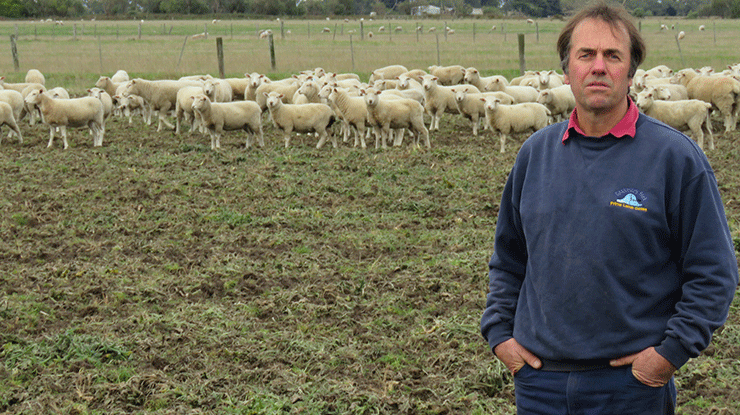
Balancing opportunity and risk
The opportunity to boost on‑farm returns by joining ewe lambs needs to be balanced against the risk of eroding capital value if the young ewes aren’t managed correctly, according to Victorian seedstock producer John Keiller.
John is co‑principal of Cashmore Oaklea Performance Maternals and has been joining ewe lambs since 1995.
“We’ve refined our practice so we’re now joining at about seven‑and‑a‑half months, but aiming to get it down to seven months,” John said.
“That will allow the ewe lambs to lamb at 12 months, providing the most efficient consumption of our spring pasture.”
John said the economic benefits of joining ewe lambs were clear for his enterprise in the high‑rainfall region of south‑western Victoria, but choosing this path is not a decision to be taken lightly.
“We join up to 2,500 ewe lambs which gives us about 1,600 extra lambs annually,” he said.
“With an average weaning weight of 28kg, at a value of $3/kg live weight, that equates to $84/head. That’s $135,000, or $112.50/ha, gross across the sheep‑grazed area.
“So, yes, ewe lambs are an amazing opportunity, but I wouldn’t consider joining them unless I had everything else right first.
“The potential survival of embryos of ewe lambs is 70% versus adult ewes at 85%, so the priority should always be given to your adult ewes – they’re your most efficient producers.
“Manage adults perfectly and only then, if you have surplus energy on the farm, consider mating ewe lambs. It’s not a given.”
Firm targets key to success
John said ewe lambs need to be carefully managed, to ensure they have sufficient time to hit adult weight targets needed to achieve a successful second joining at 19 months of age. Some of his management strategies include the following:
- ensure ewe lambs are 7–7.5 months of age at joining
- ensure ewe lambs weigh a minimum of 37kg at start of the 50‑day joining
- provide nutrition that allows weight gain of 100–150g/day throughout joining
- use rams with good Australian Sheep Breeding Values for number of lambs weaned (i.e. early puberty), low birth weight and positive lambing ease
- use experienced rams at a higher percentage than for adult ewes, i.e. 2% rather than 1.3% for mature ewes
- set date‑based (rather than lamb weight‑based) weaning targets to give dams sufficient time to recover.
Risky business
“Joining ewe lambs is all about opportunity versus risk,” John said.
“If you allow insufficient time for post‑weaning recovery of weight and condition score, the risk is that a large number of high‑value breeding animals will pregnancy‑test empty and be sold as empty 22‑month‑olds at a low value as mutton.
“All these capital‑value animals that you spent development money on will give you one lamb and then that’s it – they’re out of the system. You will only undertake that poor management process once.”



